What To See in Spoleto:
History, Culture, and Timeless Charm
“Spoleto is the most beautiful discovery I made in Italy […], there is such a wealth of beauty almost unknown, mountains, valleys, forests of oaks, monasteries, waterfalls!” — Hermann Hesse (1911)
Spoleto is a captivating city in southern Umbria, located in the province of Perugia. With nearly 38,000 inhabitants, it is considered one of the region’s most important artistic and cultural centers. The city stretches from the slopes of Colle Sant’Elia down to the Tessino stream, offering a unique blend of medieval atmosphere, natural scenery, and historic landmarks.
For those who love culture and art, Spoleto is a must-visit destination in Italy. Its streets, squares, and monuments tell centuries of history, making it a perfect itinerary for travelers interested in medieval architecture, religious heritage, and artistic treasures.
La Rocca Albornoziana
One of the city’s most iconic landmarks is the Rocca Albornoziana, perched on the summit of Monte Sant’Elia and overlooking the entire town.
Commissioned in the mid-14th century by Cardinal Egidio Albornoz under the orders of Pope Innocent VI, and designed by the architect Matteo Gattaponi, this fortress was built to reaffirm the power of the Church in central Italy after the Papacy returned from Avignon to Rome.
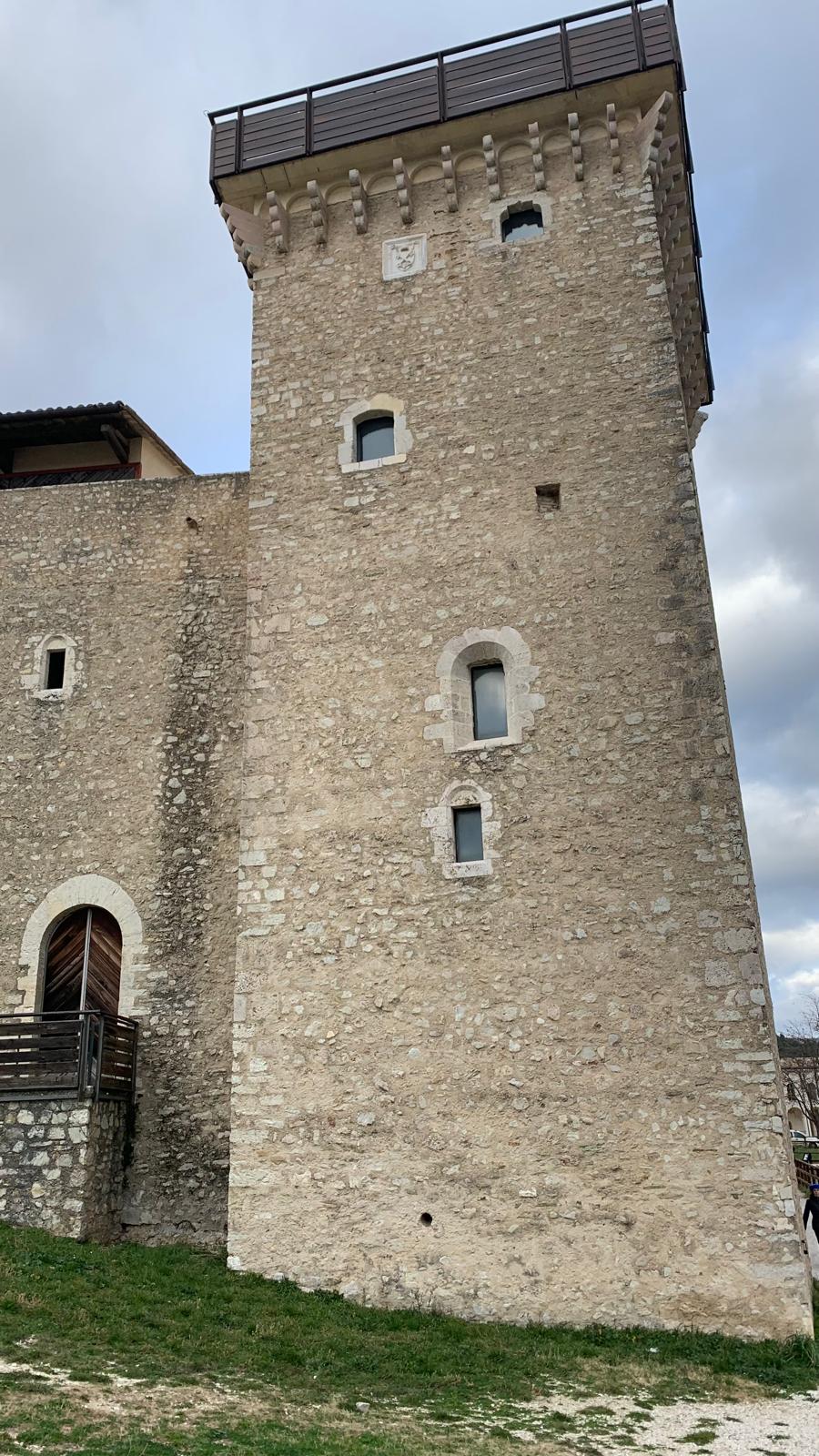
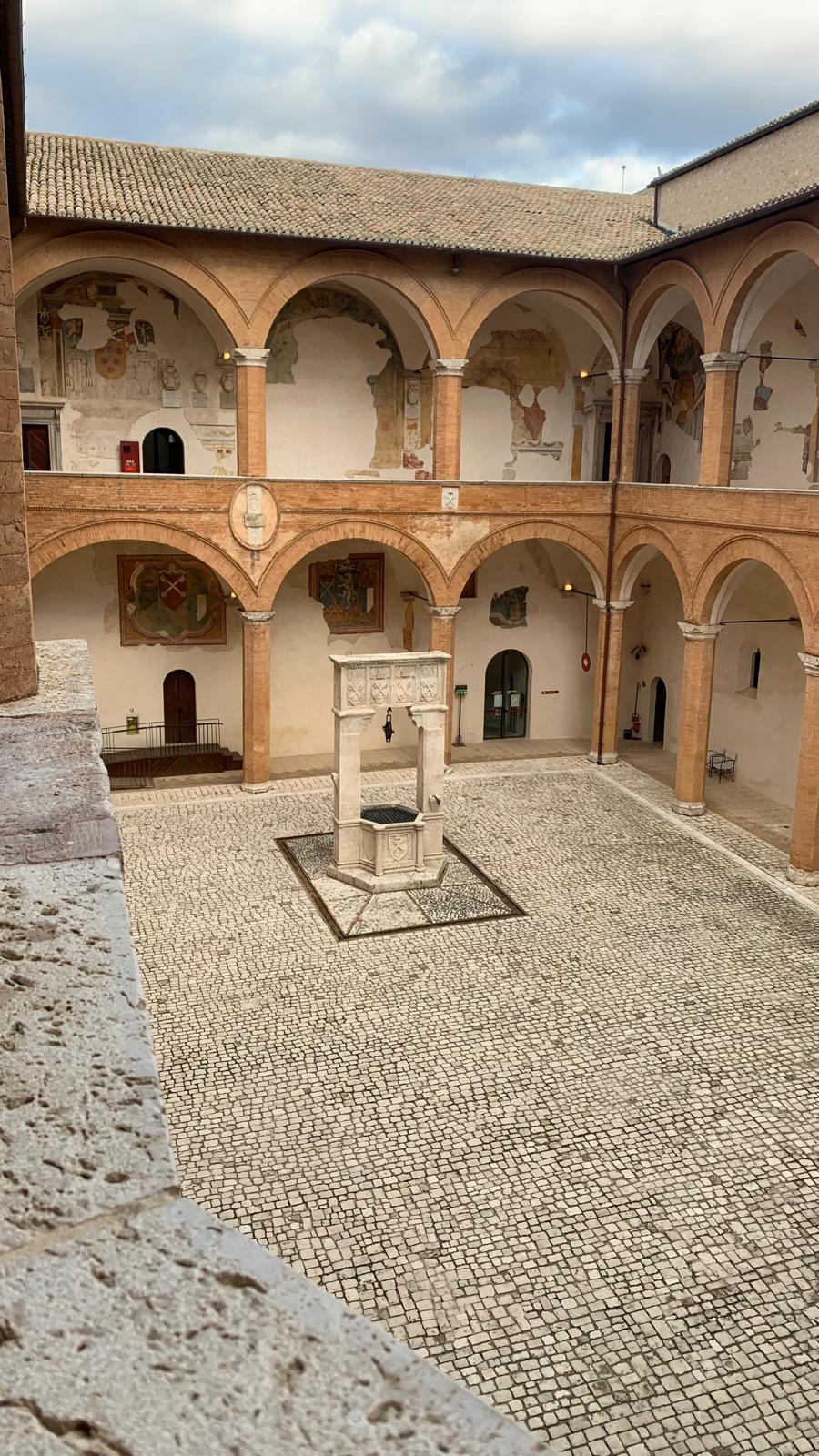
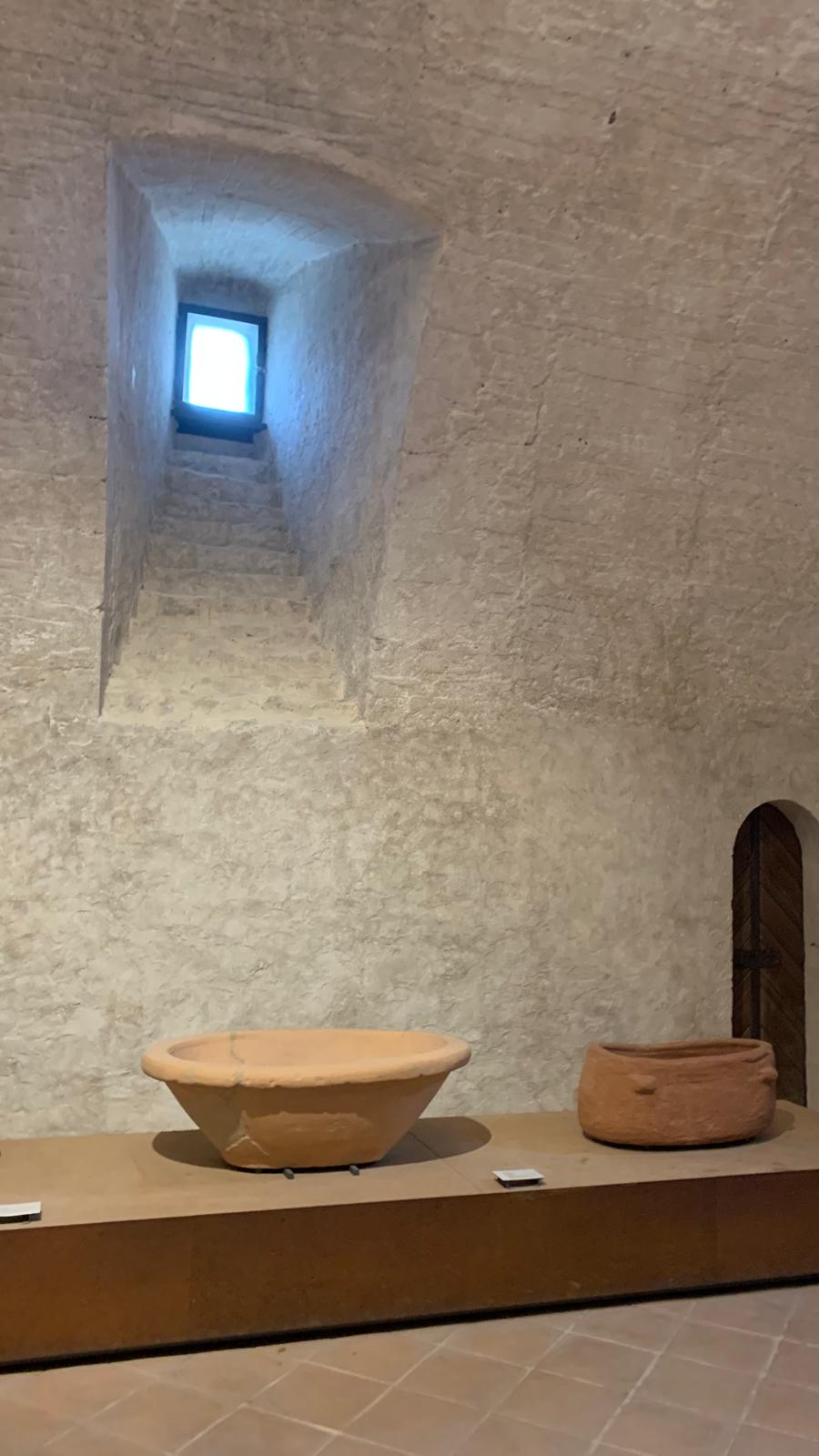

The Rocca has a rectangular layout, defined by four corner towers and two central towers connected by a passageway. Inside, visitors can explore two distinct courtyards:
- Cortile delle Armi (Courtyard of Arms), once used by the troops.
- Cortile d’Onore (Courtyard of Honor), where governors lived and where Popes Boniface IX and Nicholas V stayed during the plague in Rome.
On the upper floor, a Renaissance stone portal leads to the Salone d’Onore (Hall of Honor), a majestic hall where important ceremonies and banquets once took place.
Over the centuries, the Rocca has had many lives: it served as a prison from 1817 to 1982 and, since 2007, it houses the National Museum of the Duchy of Spoleto, making it a must-see stop for every traveler exploring the city.
The Cathedral of Spoleto (Duomo di Santa Maria Assunta)
Another unmissable monument in Spoleto is its majestic Cathedral of Santa Maria Assunta, better known as the Duomo di Spoleto. This masterpiece of Romanesque architecture was built in the 12th century and later enriched with Renaissance and Baroque elements, creating a fascinating blend of artistic styles.
Standing proudly at the end of a wide staircase, the Cathedral immediately captures visitors’ attention with its impressive façade decorated with a rose window, mosaics by Filippo Lippi, and elegant arches.
Inside, the Duomo houses precious works of art, including:
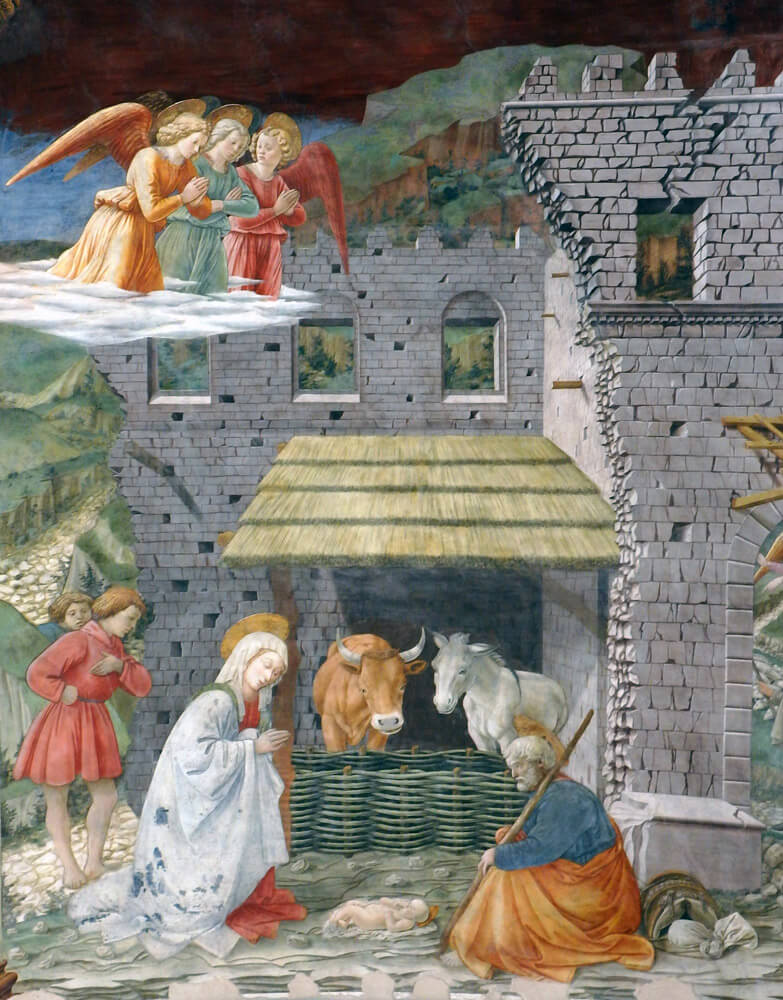
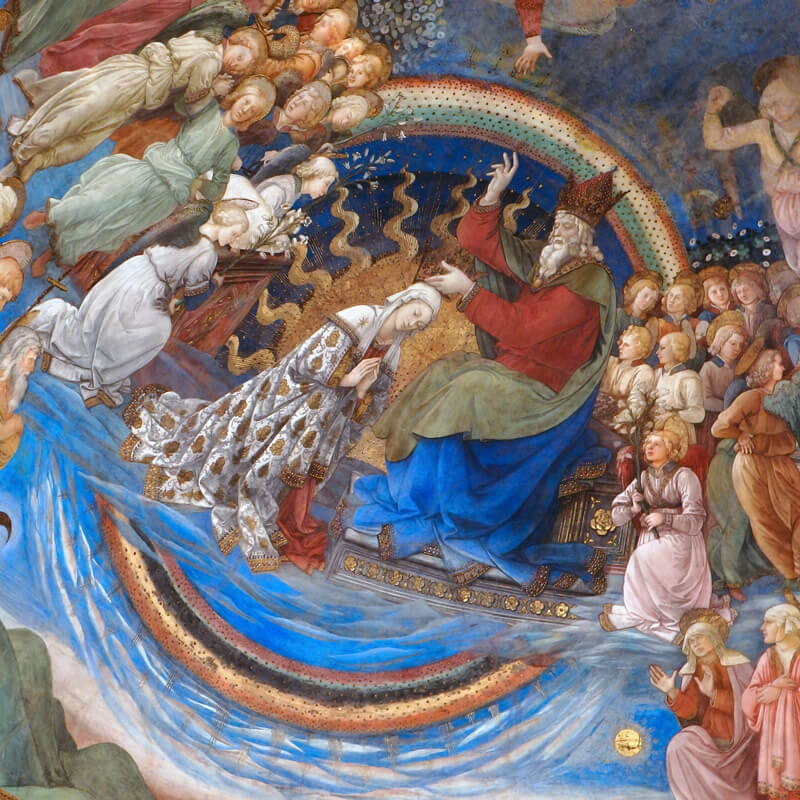
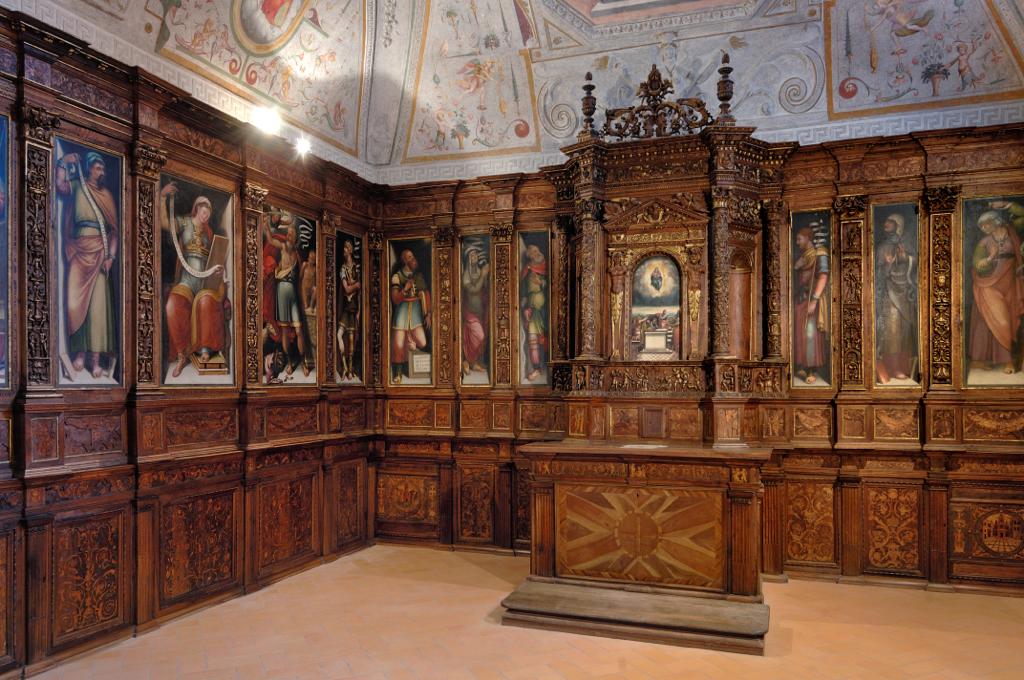
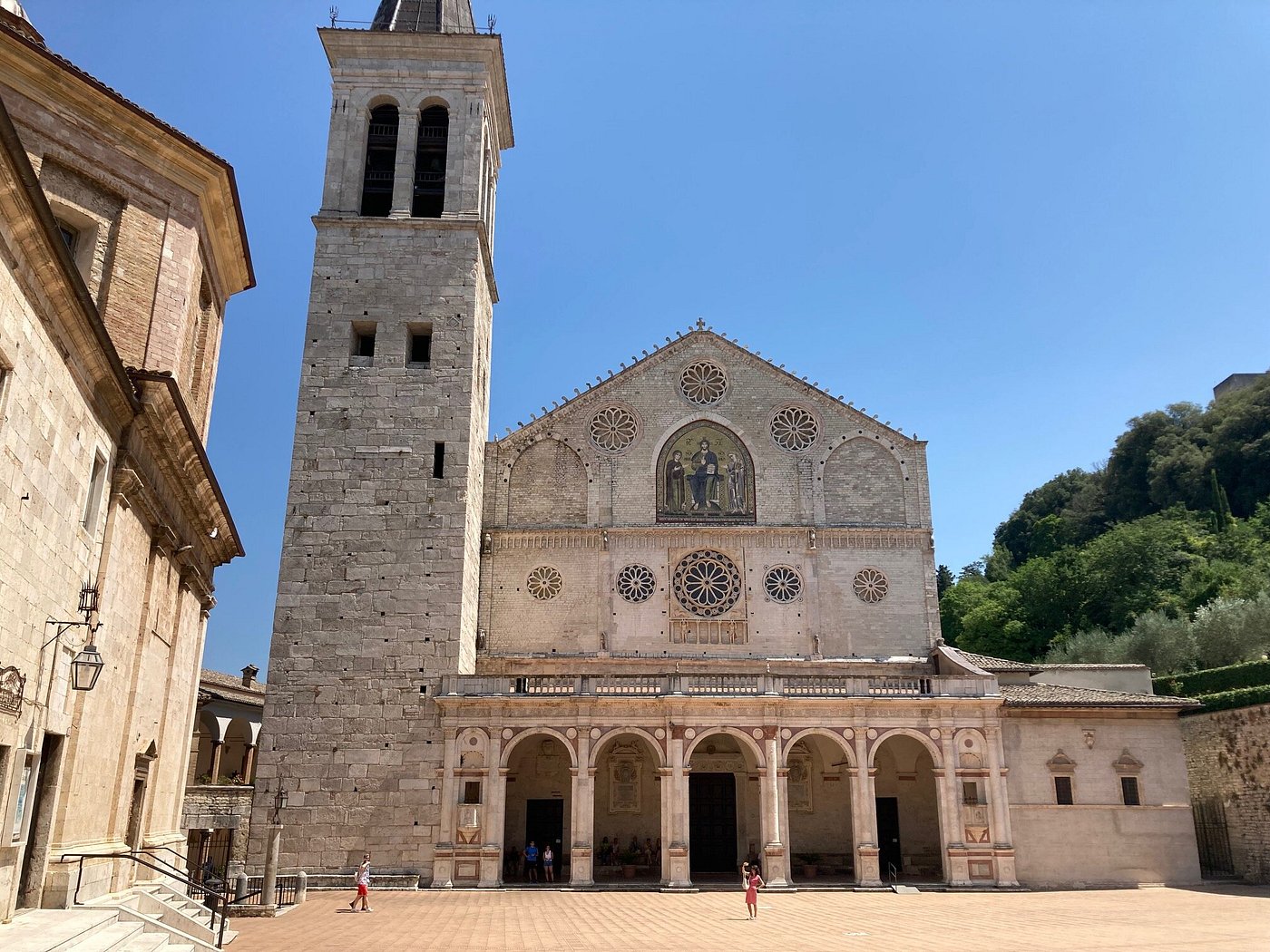
The Cathedral square itself is one of the most picturesque places in Spoleto, often used as a stage for events and concerts during the famous Festival dei Due Mondi. Whether you are passionate about art, architecture, or history, the Duomo of Spoleto is a place that will leave you inspired and amazed.
Ponte delle Torri (Bridge of Towers)
One of the most iconic symbols of Spoleto is the Ponte delle Torri, a striking medieval aqueduct and bridge that connects Colle Sant’Elia (where the Rocca Albornoziana stands) with Monteluco hill.
With its ten majestic arches and a length of nearly 230 meters, the Ponte delle Torri rises about 80 meters above the Tessino Valley, offering breathtaking views of Spoleto and the surrounding Umbrian hills.
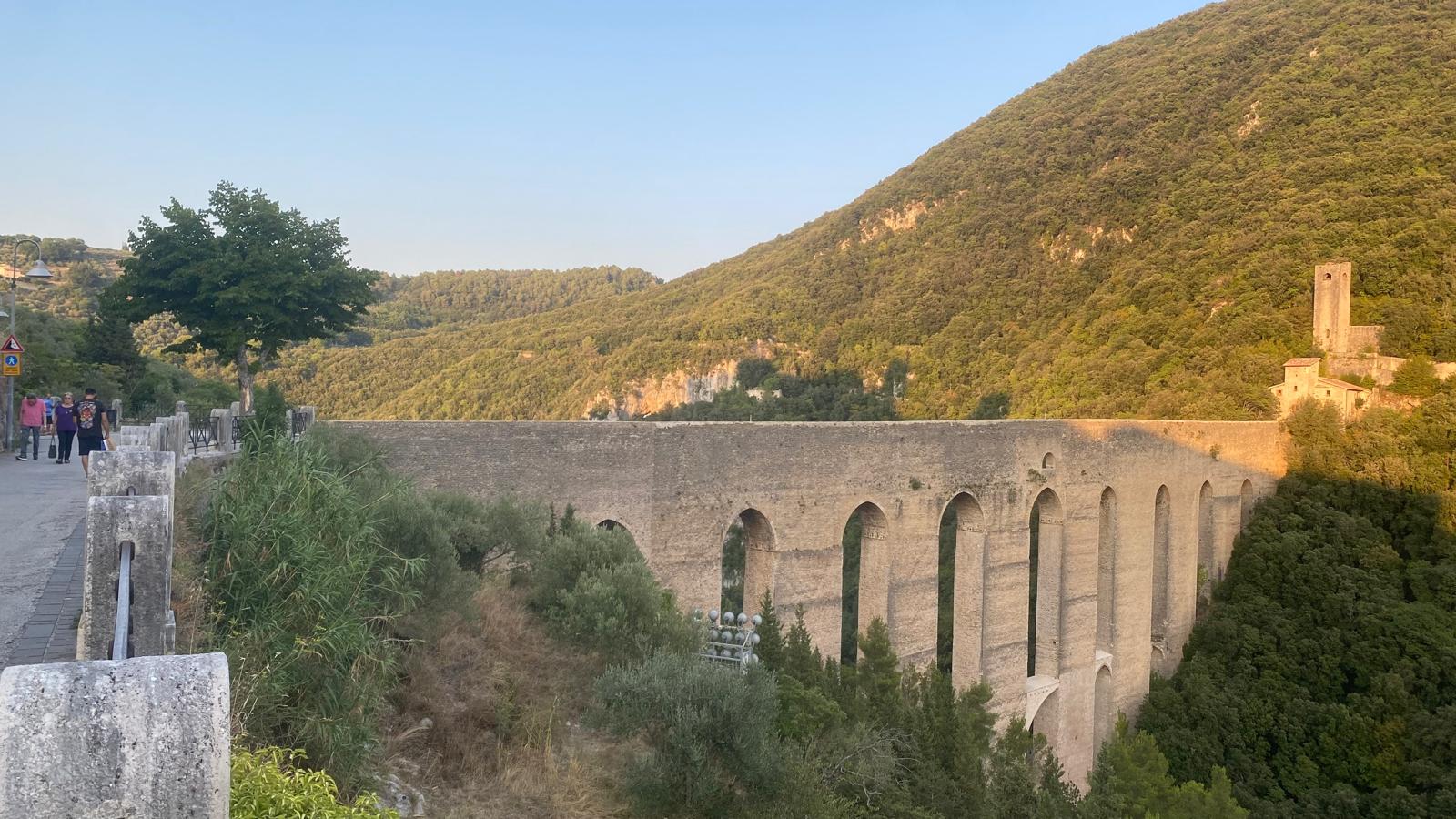
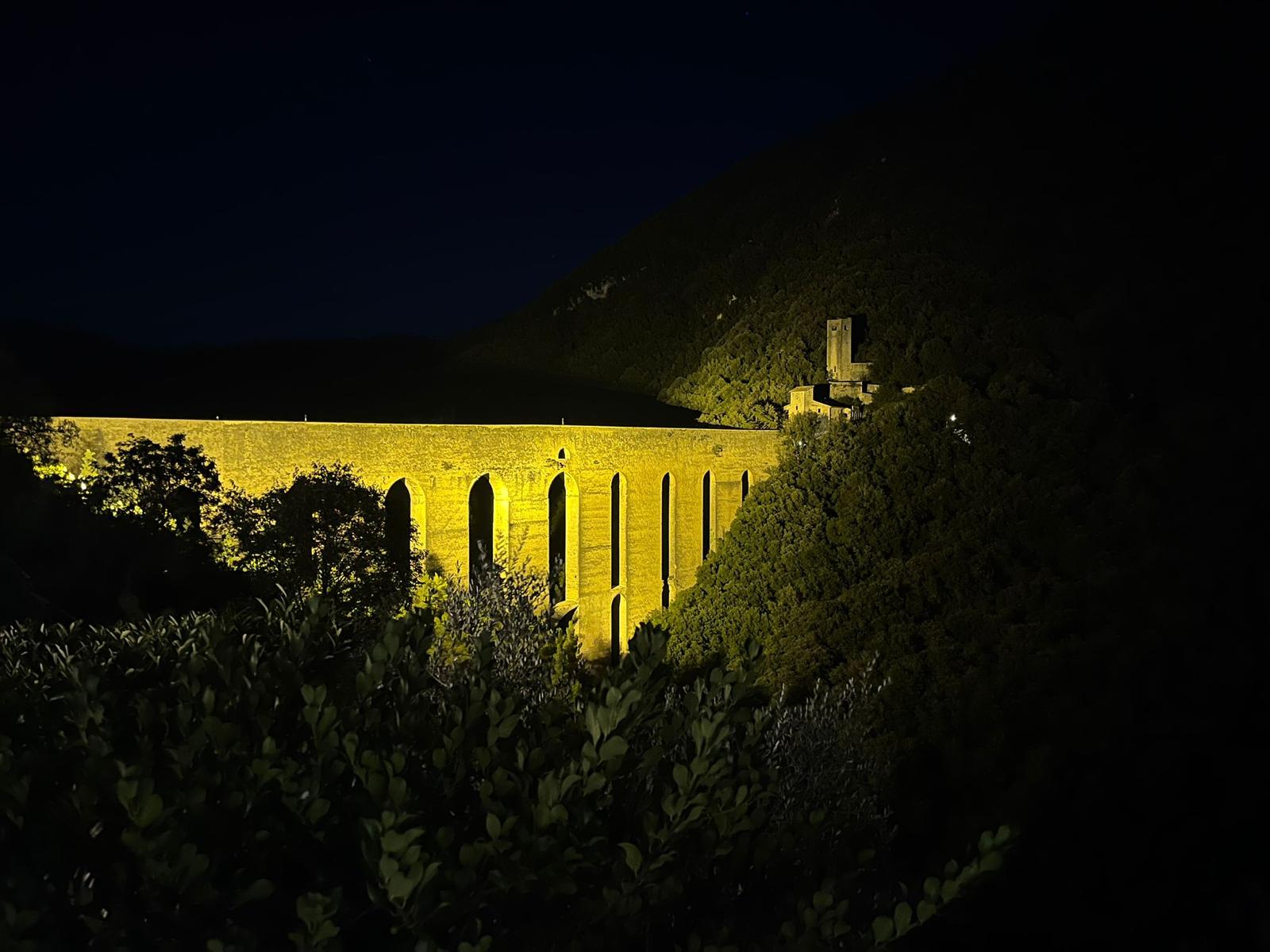
Although the structure we see today was built in the 14th century, many scholars believe it was erected on Roman foundations, giving it an even deeper historical significance. Throughout history, the bridge served not only as an aqueduct but also as a pedestrian crossing, linking the city to the sacred woods of Monteluco, where monks once lived in solitude.
For travelers, the Ponte delle Torri is more than just a monument: it is a panoramic viewpoint and a symbol of the city’s endurance through centuries. A walk to the bridge rewards visitors with spectacular landscapes, perfect for photography and quiet moments in nature, just steps away from Spoleto’s historic center.
Teatro Romano (Roman Theatre of Spoleto)
Among the many treasures of Spoleto, the Teatro Romano (Roman Theatre) stands out as one of the city’s most fascinating archaeological sites. Built in the 1st century AD, this ancient theatre could host up to 2,000 spectators, and it remains a powerful reminder of the importance of Spoleto during the Roman Empire.
The theatre was discovered in the 19th century during excavations and has since been carefully restored. Today, visitors can admire its semi-circular seating, the remains of the stage, and the overall structure that reveals the grandeur of Roman engineering.
But the Teatro Romano is more than just a ruin: it is still alive with culture. Each summer, it becomes a venue for concerts, plays, and events as part of the Festival dei Due Mondi, creating a magical connection between the past and the present.
Next to the theatre is the Archaeological Museum of Spoleto, where artifacts and mosaics from the Roman era are displayed, offering a deeper insight into the daily life of the ancient Spoletini.
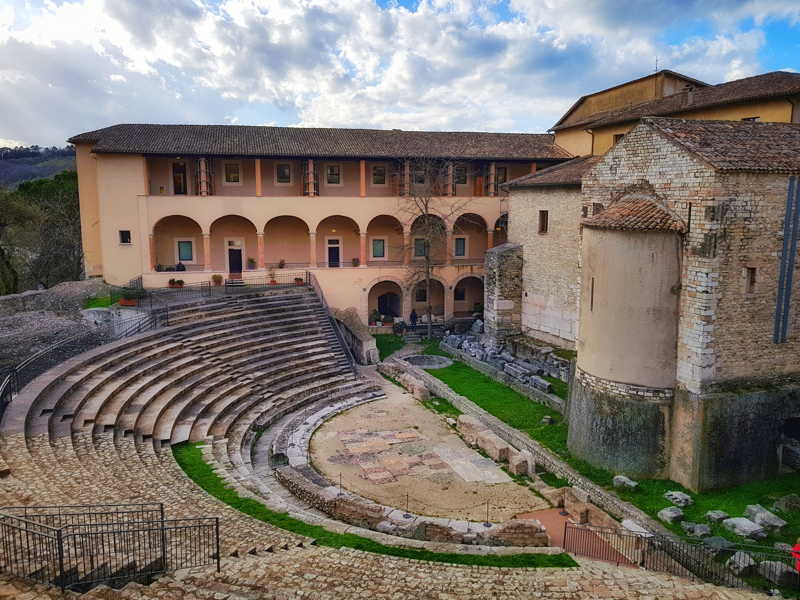
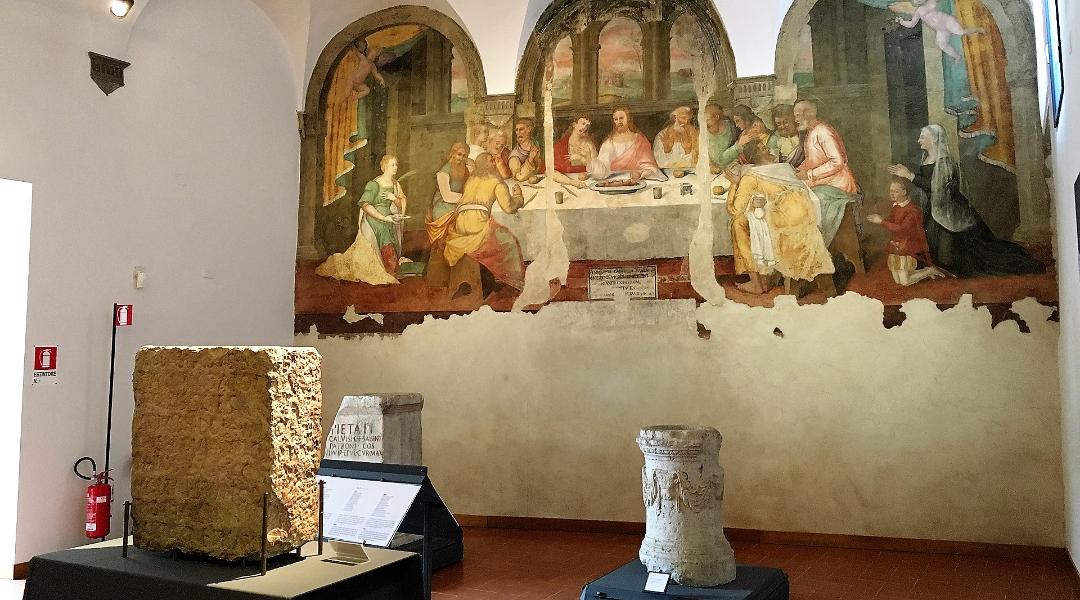
For history enthusiasts and casual travellers alike, the Roman Theatre of Spoleto is a must-see stop that brings the city’s ancient roots vividly to life.
Church of San Salvatore (UNESCO World Heritage Site)
Among the sacred monuments of Spoleto, the Church of San Salvatore is without doubt one of the most fascinating and historically significant. Recognized as a UNESCO World Heritage Site since 2011, it forms part of the “Longobards in Italy. Places of Power (568–774 A.D.)” UNESCO serial property, which includes seven monumental sites across the Italian peninsula. This recognition highlights the church’s extraordinary cultural and artistic value as a witness of the Lombard presence in central Italy.
Located just outside the historic center of Spoleto, near the cemetery, the Church of San Salvatore offers travelers an opportunity to step back into the early centuries of Christianity. Although it has been modified several times over the centuries, the building preserves its early Christian foundation, which dates to the 4th–5th century AD. What makes San Salvatore truly unique is the way it combines early Christian traditions with Lombard architectural influences, a rare and powerful example of cultural fusion in Umbria.
From the outside, the church has a sober and austere appearance, with its rectangular plan and simple stone walls. Yet stepping inside reveals a world of symbolism and elegance. Visitors are immediately struck by the majestic columns with Corinthian capitals, some of which are spolia (reused elements) from earlier Roman buildings. The layout of the nave and side aisles, divided by these columns, creates a sense of harmony that reflects both classical heritage and medieval innovation.
The apse area is particularly noteworthy, with its arched decorations and refined stonework that echo both Roman and Lombard artistry. Although much of the original decoration has been lost over time, the church’s atmosphere is still deeply spiritual, offering a rare glimpse into the continuity of Christian worship across centuries.
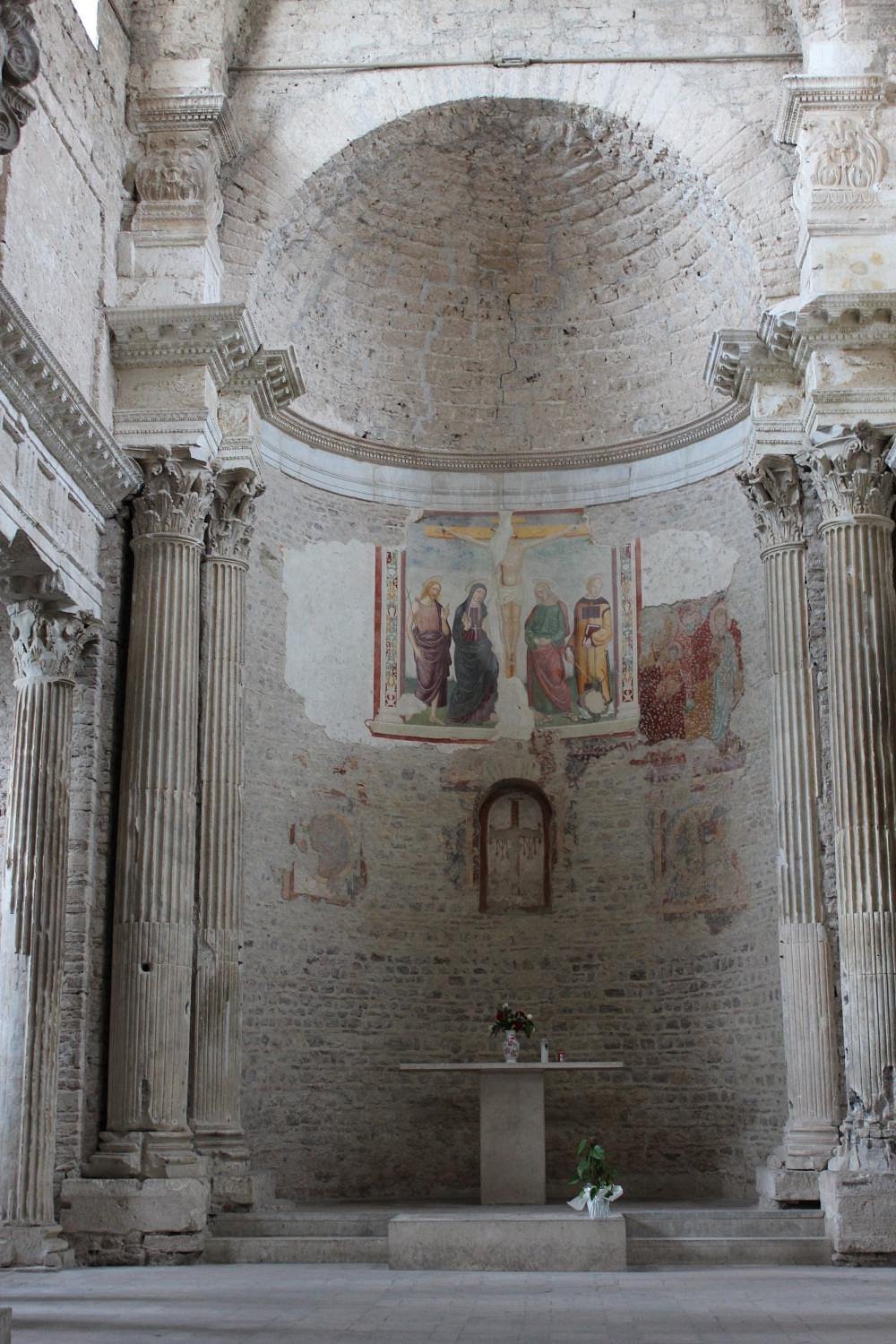
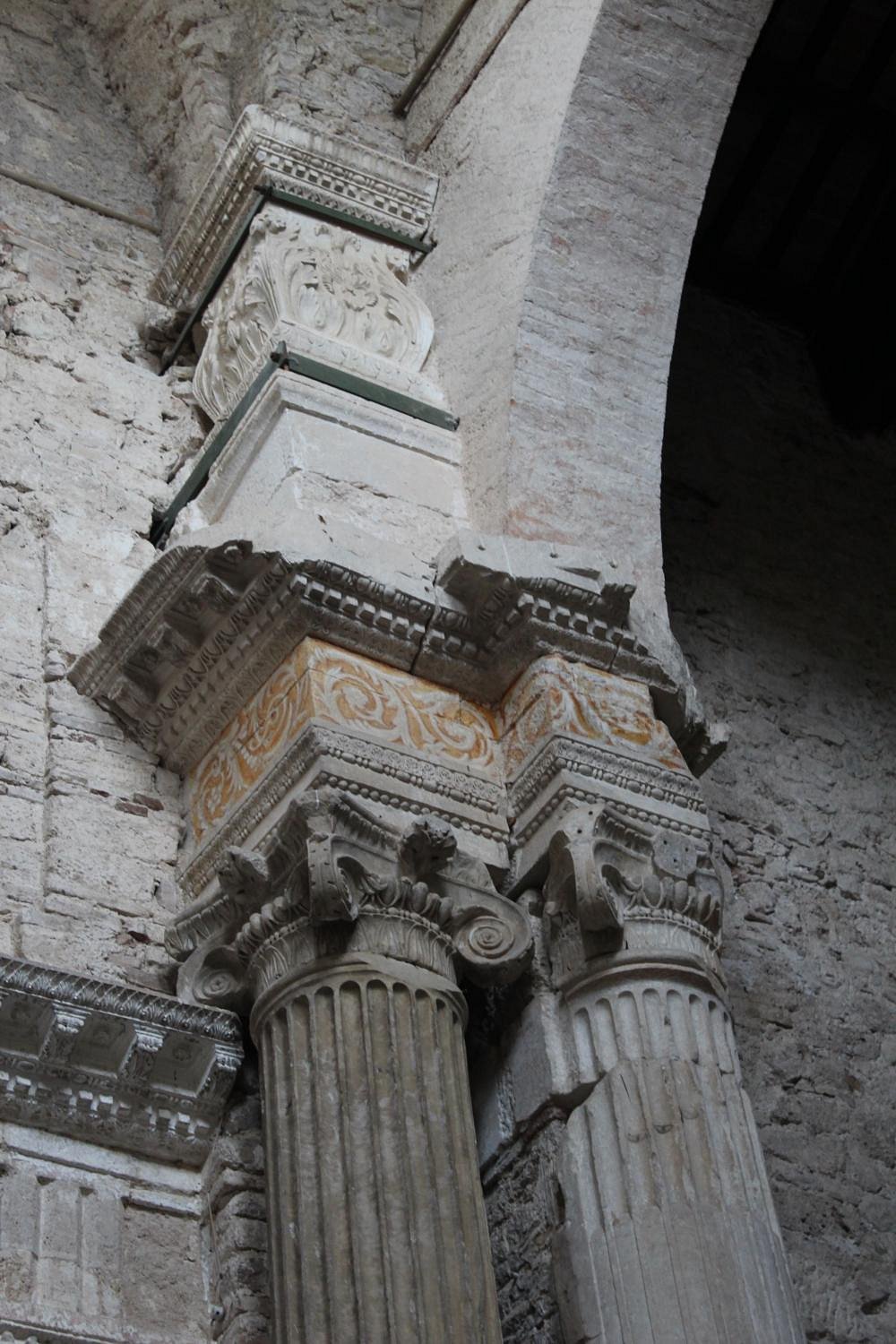

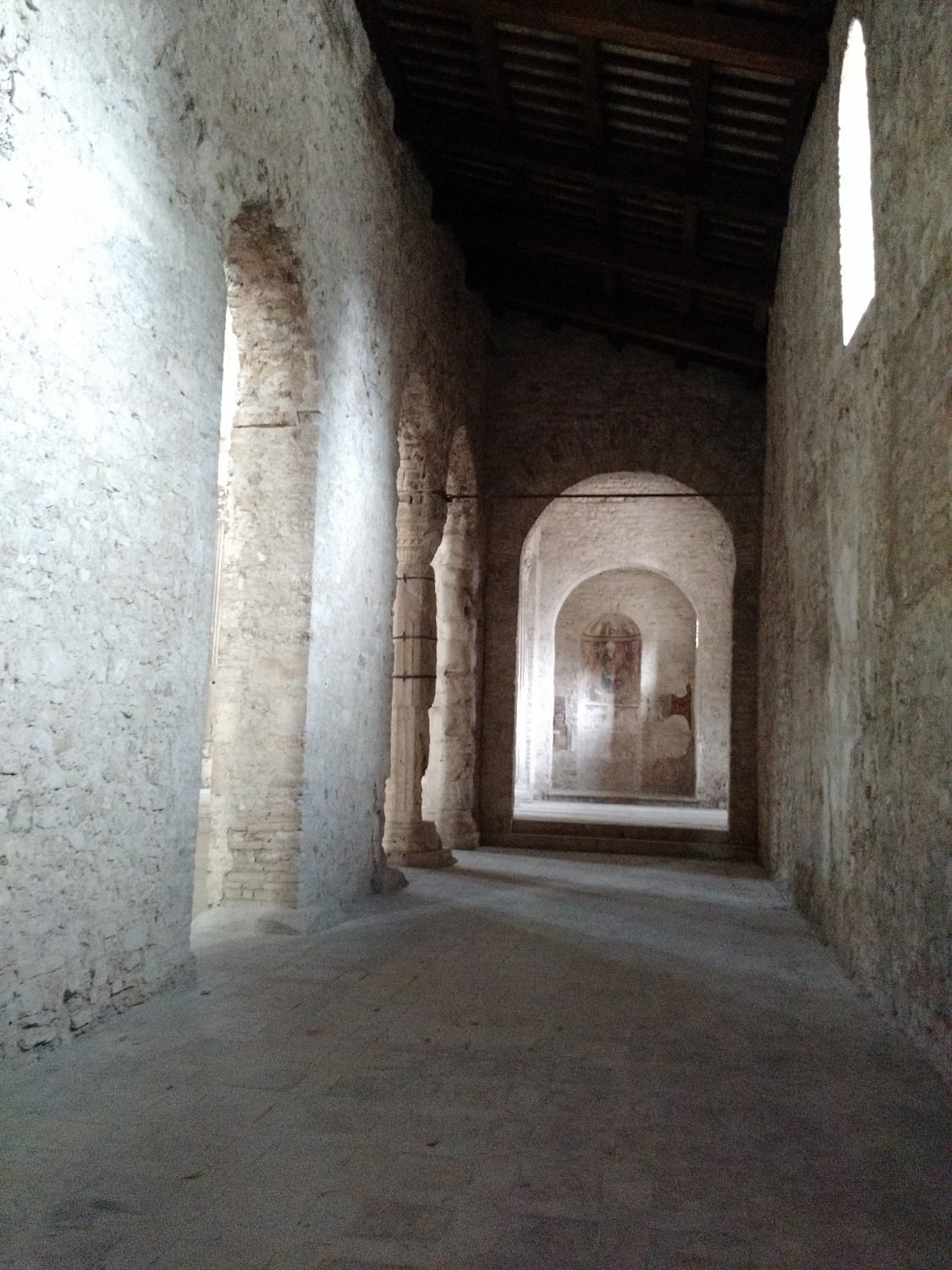
For travelers exploring Spoleto, a visit to the Church of San Salvatore is not just about admiring an old building – it is about experiencing a place where history, faith, and art meet. The quiet location, slightly removed from the bustling heart of the city, makes it an ideal stop for reflection.
As a UNESCO site, San Salvatore is also an essential part of a wider itinerary that links Spoleto with other Lombard heritage sites in Italy, from Brescia in the north to Benevento in the south. Including San Salvatore in your journey means connecting with a story that is not only local but truly European in scale.
Arco di Druso and Fontana di Piazza del Mercato
Walking through the heart of Spoleto’s historic center, travellers will quickly encounter two landmarks that perfectly capture the city’s Roman roots and lively medieval spirit: the Arco di Druso (Arch of Drusus and Germanicus) and the Fontana di Piazza del Mercato (Market Square Fountain).
The Arco di Druso dates back to 23 AD and was erected in honor of the Roman princes Drusus and Germanicus, the sons of Emperor Tiberius. Originally part of the ancient Roman forum, the arch once marked the entrance to the forum’s central area. Today, it stands as a striking reminder of Spoleto’s important role in the Roman world. Although only part of the original structure remains, the arch still showcases refined stonework and classical proportions, making it a fascinating stop for history enthusiasts.
Just a few steps away lies the Piazza del Mercato (Market Square), one of Spoleto’s most vibrant and picturesque corners. At the center of the square stands the Fontana di Piazza del Mercato, a charming Renaissance fountain that has served for centuries as both a decorative element and a source of fresh water for the city’s inhabitants. Its elegant design, with carved basins and flowing water, adds a touch of timeless beauty to the bustling square.
The piazza itself has always been the social and commercial heart of Spoleto. Surrounded by shops, cafés, and historic palazzi, it is the perfect place to pause during a city walk, enjoy an espresso, or simply soak in the atmosphere of daily life in Umbria. Travelers who stop here will experience an authentic blend of history and local culture: Roman ruins at the arch, Renaissance artistry at the fountain, and the vibrant rhythm of a living Italian piazza.
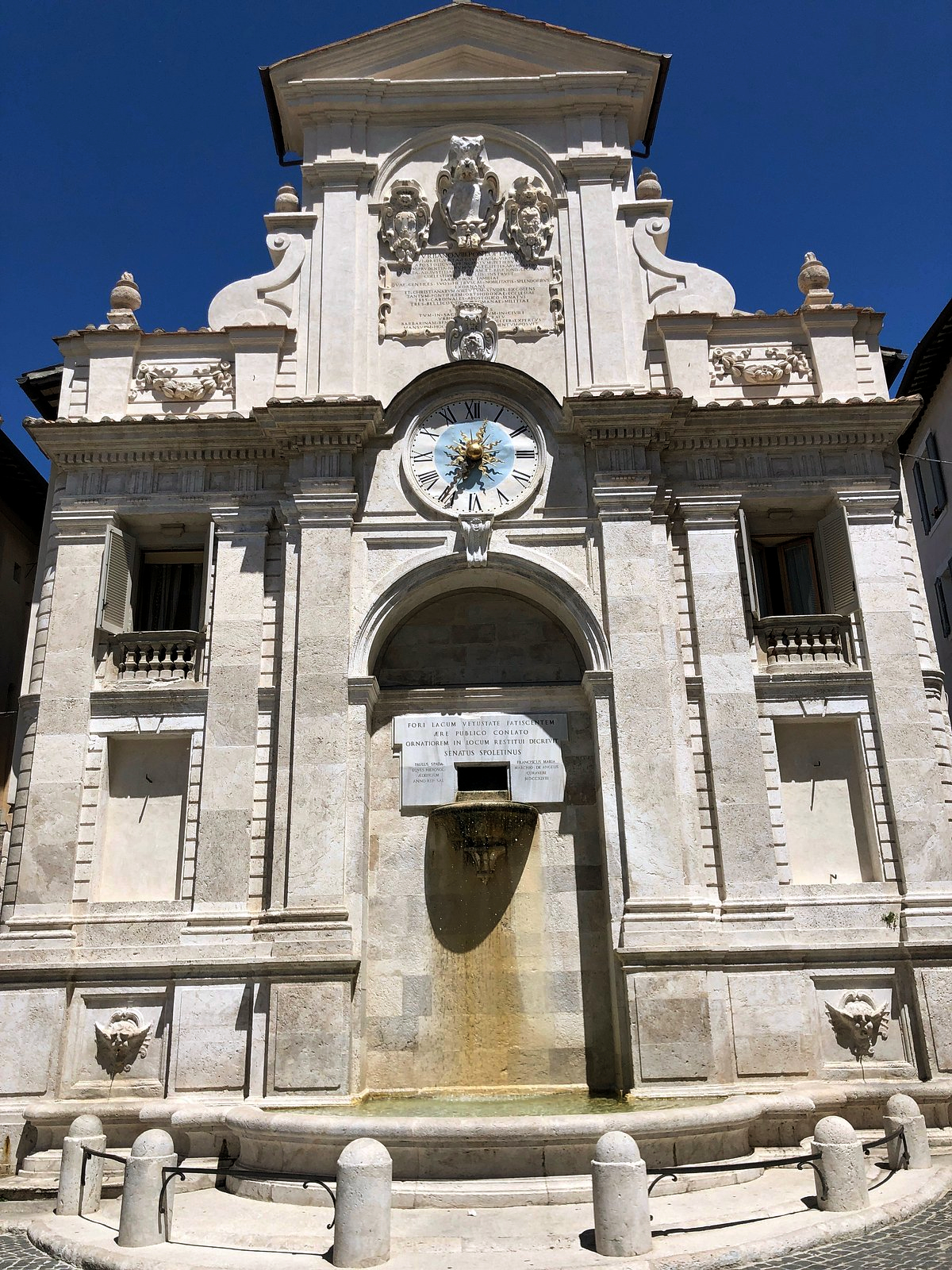
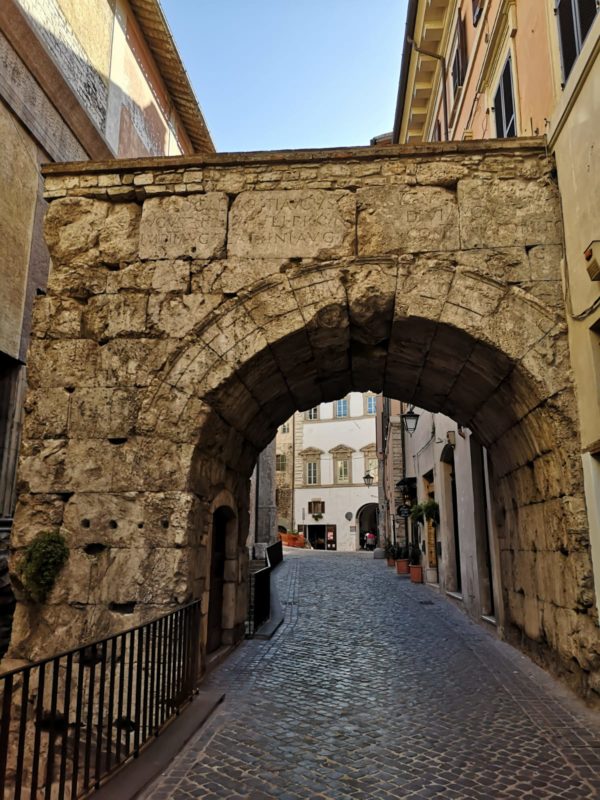
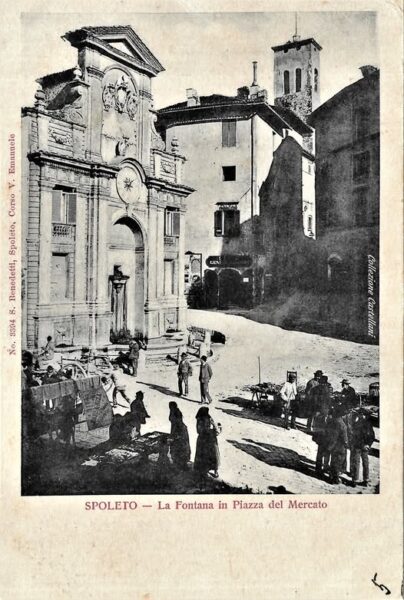
Together, the Arco di Druso and the Fontana di Piazza del Mercato offer a unique window into Spoleto’s layered past, where Roman antiquity and medieval tradition coexist side by side. They are not grand monuments like the Rocca or the Cathedral, but they tell the quieter, more intimate story of the city – one of continuity, community, and everyday life across centuries.
For visitors, this stop is a must not only for photography but also for the chance to sit, observe, and feel the living heartbeat of Spoleto.
Museo del Tessile e del Costume (Textile and Costume Museum)
For travelers looking to discover a different side of Spoleto’s cultural heritage, the Museo del Tessile e del Costume is an absolute gem. Located inside the former Monastery of San Nicolò, this museum showcases centuries of textile tradition, weaving together the history of fashion, craftsmanship, and daily life in Umbria.
The museum’s collection spans from the 15th century to the 20th century, highlighting how textiles and clothing evolved over time in both artistic and practical ways. Visitors can admire a wide range of artifacts, including:
One of the most fascinating aspects of the museum is how it illustrates the link between Spoleto’s history and the wider world. The city, situated along important trade routes, absorbed influences from Florence, Rome, and even beyond Italy, and this is clearly reflected in the styles and fabrics on display.
The museum also places strong emphasis on Umbria’s weaving tradition, with exhibits dedicated to local craftsmanship. This allows visitors not only to see the finished garments but also to understand the skills and techniques that made Umbria a recognized center of textile production.
Beyond the artifacts, the museum itself is worth the visit. The Monastery of San Nicolò provides a beautiful setting, with its cloisters and historic architecture creating an intimate, contemplative atmosphere. Walking through the galleries feels like a journey through time, where each piece of fabric tells a story of faith, status, or daily routine.
For travelers interested in art, history, or fashion, the Museo del Tessile e del Costume is a hidden treasure in Spoleto. It’s less crowded than the city’s major monuments, making it a perfect stop for those who want to explore Spoleto’s heritage at a slower pace.
Whether you are fascinated by medieval embroidery, Renaissance elegance, or the humble fabrics of past centuries, this museum offers a deep and authentic perspective on the role of textiles in shaping identity and culture in Umbria.
Mura di Spoleto
To complete your journey through Spoleto, take time to walk along the Mura di Spoleto, the ancient city walls that still embrace the historic center. These fortifications, built in Roman times and strengthened during the Middle Ages, are more than stone defenses – they are silent witnesses of the city’s long history.
But the real magic of Spoleto lies not only in its monuments but also in the small details hidden in its streets. We suggest slowing down and exploring with curiosity: follow the narrow alleys, linger in the quiet courtyards, and look closely at the façades of old houses. Every corner of the historic center hides a secret – a fragment of Roman masonry, a medieval arch, a Renaissance window frame, or simply a glimpse of local life that connects the past with the present.

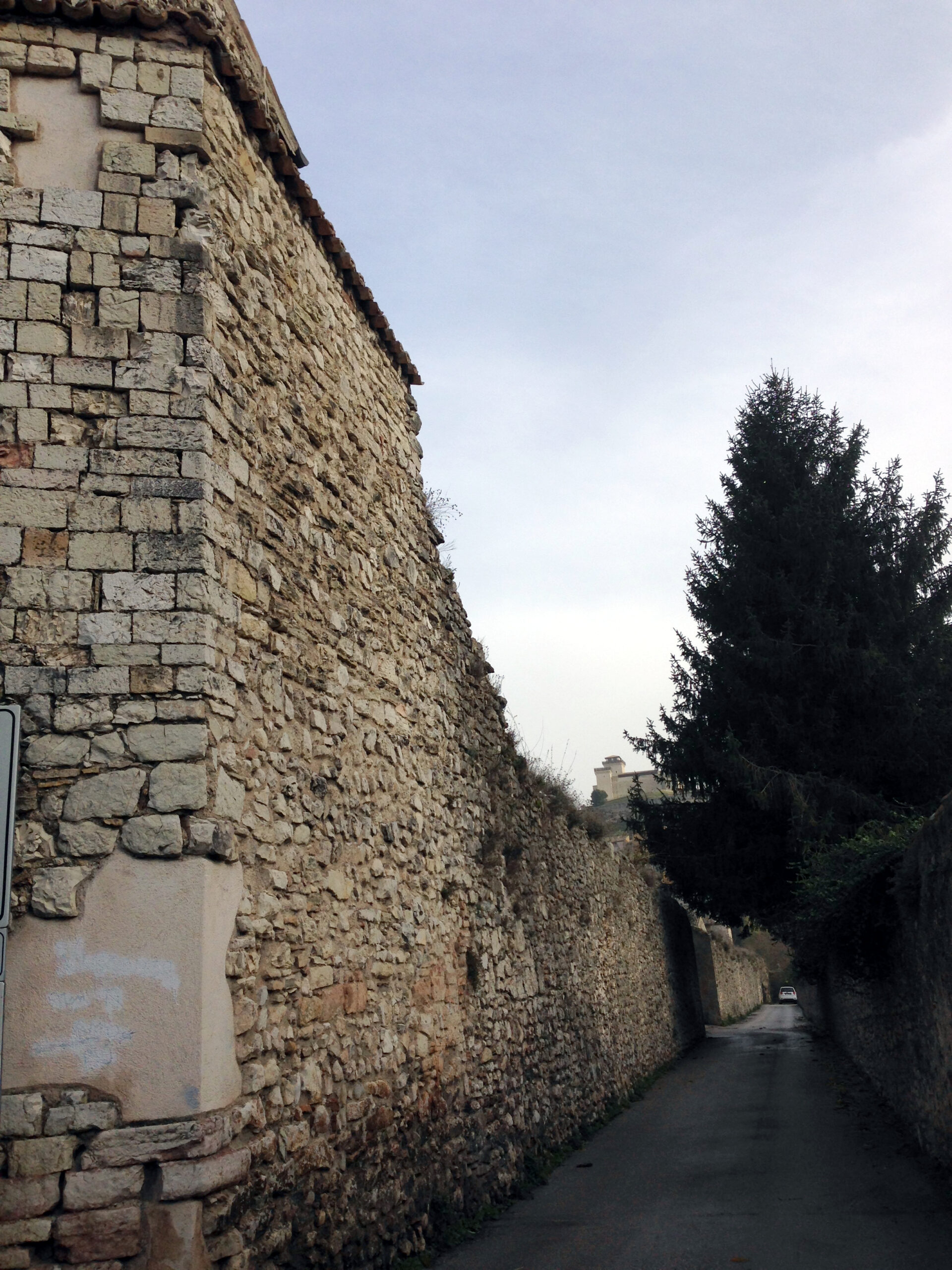

Whether you are here for a day trip or a longer stay, Spoleto rewards those who walk slowly and let themselves be surprised. The Mura di Spoleto are not just the city’s boundary; they are the perfect reminder that history is alive in every stone, and discovery awaits at every step.
After exploring all the best things to do in Spoleto — from historic churches and Roman ruins to scenic walks through the old town — you’ll realize that the city itself is already a little workout with its many stairs and ups and downs. But if you love combining culture with active relaxation, you can make your stay in Spoleto or stay in Umbria even more special. Just a few minutes from Spoleto, Adagio Umbro offers the chance to play tennis in the Umbrian hills and enjoy a peaceful picnic surrounded by nature. It’s a gentle way to complete your holiday, recharge your energy, and carry home a memory that will make you smile every time you think of Spoleto.
Stay Connected
For more updates, photos, and stories from Adagio Umbro, follow us on our social media channels:

